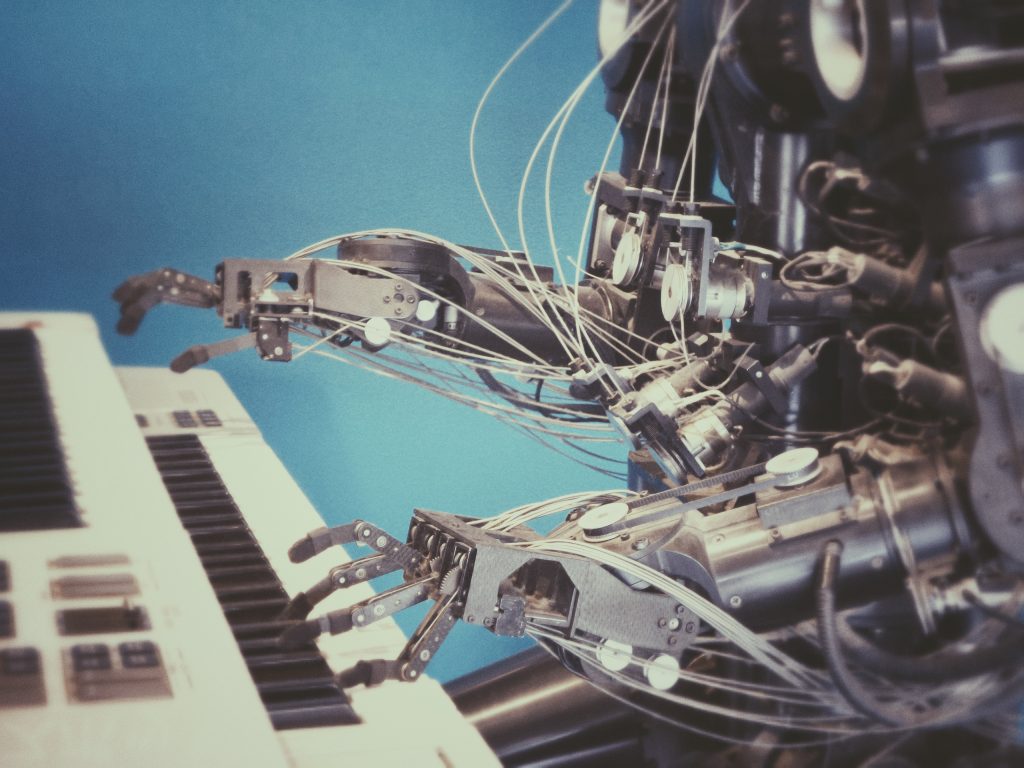Machine learning can be used to make computers learn like humans. Researchers at IISc are applying its principles in fields as diverse as robotics and law

When Google’s AlphaFold burst onto the scene a few years ago with its ability to predict protein structures using only their amino acid sequences, it felt like the dawn of a new age in biology. It was yet another instance of machines having “learnt” to accomplish complex tasks that humans simply couldn’t perform.
The technique used by AlphaFold, deep learning, is part of the broader discipline of machine learning. It has found numerous applications in several fields and attracted the attention of researchers from around the world, including IISc.
But what is machine learning? How is it different from conventional computer programming? “Everyone has a different take on machine learning,” says Shishir Kolathaya, Assistant Professor at the Department of Computer Science and Automation (CSA) at IISc. “Machines learning to perform a seemingly complex task without human input is machine learning.”
“It takes statistics and algorithms coming together for machine learning to take place,” adds Ambedkar Dukkipati, Professor, CSA. “Humans have been making sense of statistics for a long time. Getting machines to do it was the next logical step.”
On the other hand, Chiranjib Bhattacharyya, Professor and Chair of CSA, has a slightly different explanation. “Machine learning is when machines learn from their environment,” he says, a definition shared by AG Ramakrishnan, Professor at the Department of Electrical Engineering, who adds, smiling, “in a pale imitation of human children.”
While the definitions of machine learning may vary depending on who you ask, all researchers agree on the fundamental principle underlying the discipline: machine learning uses algorithms that better themselves through experience and the use of data, unlike a conventional program whose code is formulated manually.
Shishir works with biped (two-legged) and quadruped (four-legged) robots. “Walking is such a simple task for humans,” he explains. “We have mastered it over millions of years of evolution. But there are so many factors involved when you try to get a machine to do it.”
It is a complex problem. Just getting robots to walk on flat surfaces is formidable, but to make robots of various sizes walk on different surfaces and gradients is a herculean task. “Machine learning, specifically deep learning, simplifies this task enormously,” says Shishir, whose goal is to make robots and other objects perform tasks without human intervention. “In this way, we move towards making science fiction a reality.”

(Photo courtesy: Shishir Kolathaya)
Science fiction was also Chiranjib’s motivation. “I used to read Satyajit Ray’s Professor Shonku short stories,” he recalls. His work focuses on the theory of machine learning. “We have been developing theories about unsupervised learning.” One of the ways in which they wish to apply this research is in the area of autonomous navigation – more specifically through the technology of LiDAR, a light-based technology which is a critical component of self-driving cars.
But Chiranjib’s greatest love is bringing together two different fields, machine learning and graph theory. “There was one result I was particularly proud of, which resulted in us discovering a new algorithm to solve the problem of finding cliques in a random graph. The algorithm allowed us to contribute back to graph theory.”
Graph theory is also one of Ambedkar’s areas of interest. “I got into machine learning because I was extremely interested in probability and abstract mathematics,” he states. “Many people believe formal mathematical proofs are only important for theory. [But] a formally proven machine learning algorithm can give you much-needed guarantees in practical applications, especially where lives are at stake.” This is particularly true for problems in one-shot and few-shot learning – making predictions using one or a few samples. “One-shot and few-shot learning is crucial for areas incapable of generating big data, such as diagnosing patients with rare diseases, where algorithms can only be trained with the limited data available,” says Ambedkar.
Ambedkar’s team has also gone on to design formally proven spectral graph algorithms for detecting communities in hypergraphs (constructs in graph theory connecting multiple related objects). This work has implications in detecting communities in a “fair” manner and may be useful in designing algorithms to help judges make decisions in courts.
Ramakrishnan’s motivation, on the other hand, is explicitly utilitarian. “I am an engineer. I solve real-world problems,” he states. “There are places where machine learning is the best tool for the job and I use it to its fullest extent.” One of his interests is linguistics, especially the study of Indian languages. “We work on complex linguistic problems, such as text-to-speech engines,” he explains. “Indian languages introduce an element of complexity into the design of these engines. The way in which we use tenses, contexts, and the way in which we combine words in Indian languages, especially South Indian languages, is much more complicated than in English.”
This complexity is apparent in the problem of speech recognition. One of Ramakrishnan’s students has worked on applying deep learning to Kannada, Tamil, Hindi and English. “We had to think about innovative ways of breaking down words to sub-words, some of which make no grammatical sense,” he says. “But the beauty of machine learning is that once the algorithms understand sub-words and their contexts, they can combine them to produce words they may never have been trained with.”
All this makes machine learning sound like a tool for all ages and problems. However, there are issues to contend with. Safety, for instance, as Shishir points out. “We would rather that a robot identify a human as a human and nothing else, especially if that robot is a self-driving car.”
Ramakrishnan concurs. “The case of the Amazon Echo speaker where Alexa, Amazon’s AI assistant, told a young child to plug in a phone charger about halfway into a wall outlet, then touch a penny to the exposed prongs as a fun challenge tells us that there is still some way for machine learning to go.”
As machine learning becomes ubiquitous, there are other ethical challenges. “Many changes have to be made to a machine learning algorithm as it makes its way from the lab to the real world,” says Chiranjib. Multinationals like Google and Facebook are the major drivers of this technology today. This isn’t bad, Ambedkar believes, “but research institutions should reassert themselves. Machine learning should benefit everyone, not just those with the deepest pockets.”
In the future, whether and how machine learning improves our well-being will depend on the intent of the humans designing and training the algorithms, according to Ramakrishnan. “At the end of the day, the algorithm is a tool. Just like with any other technology, what really matters is the nature of the person using it.”






